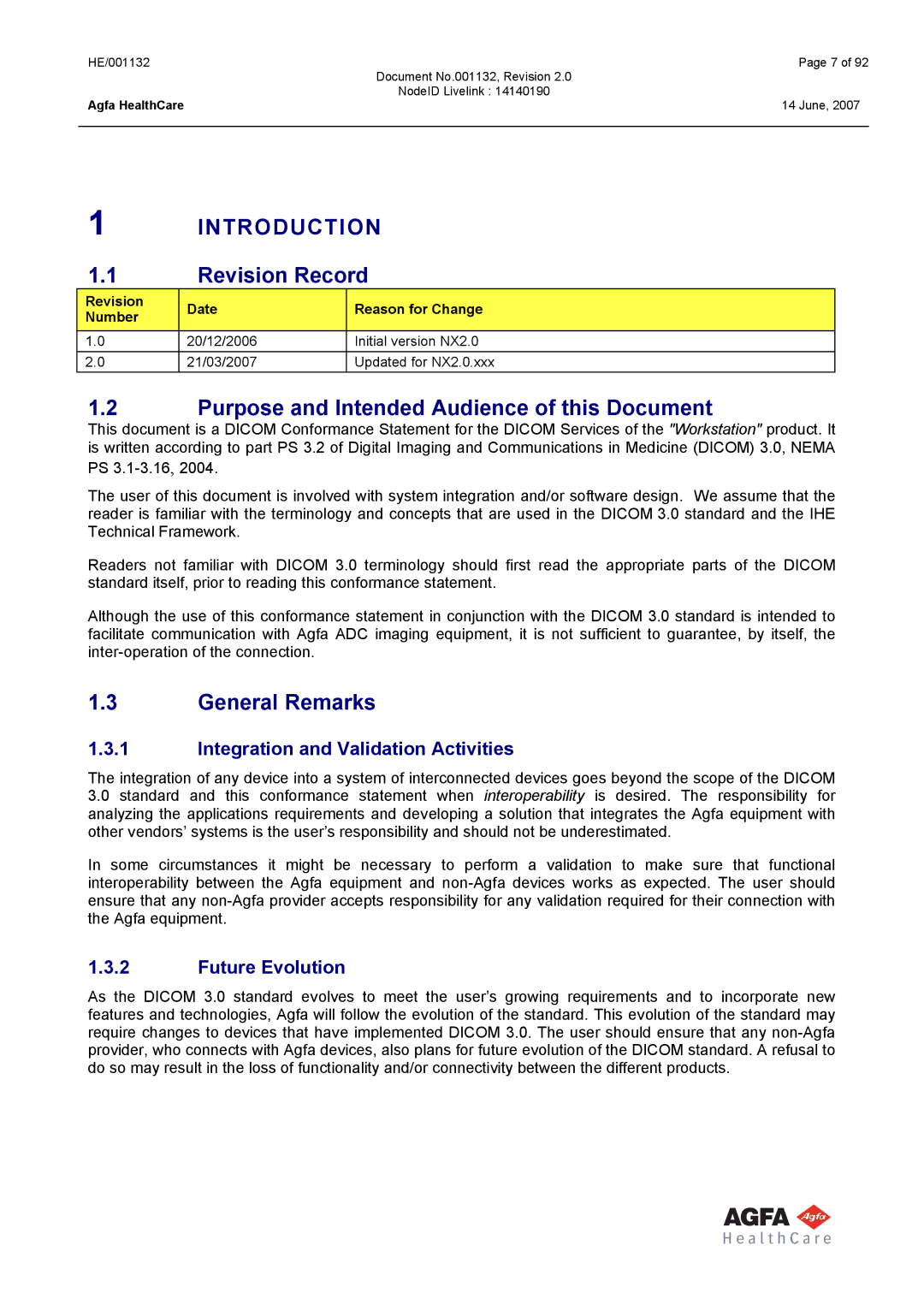HE/001132 | Page 7 of 92 |
| Document No.001132, Revision 2.0 |
Agfa HealthCare | NodeID Livelink : 14140190 |
14 June, 2007 | |
|
|
1INTRODUCTION
1.1Revision Record
| Revision |
|
| Date |
|
| Reason for Change |
|
| Number |
|
|
|
|
| ||
|
|
|
|
|
|
|
| |
|
|
|
|
|
|
|
|
|
1.0 |
| 20/12/2006 |
|
| Initial version NX2.0 | |||
2.0 |
| 21/03/2007 |
|
| Updated for NX2.0.xxx | |||
1.2Purpose and Intended Audience of this Document
This document is a DICOM Conformance Statement for the DICOM Services of the "Workstation" product. It is written according to part PS 3.2 of Digital Imaging and Communications in Medicine (DICOM) 3.0, NEMA PS
The user of this document is involved with system integration and/or software design. We assume that the reader is familiar with the terminology and concepts that are used in the DICOM 3.0 standard and the IHE Technical Framework.
Readers not familiar with DICOM 3.0 terminology should first read the appropriate parts of the DICOM standard itself, prior to reading this conformance statement.
Although the use of this conformance statement in conjunction with the DICOM 3.0 standard is intended to facilitate communication with Agfa ADC imaging equipment, it is not sufficient to guarantee, by itself, the
1.3General Remarks
1.3.1Integration and Validation Activities
The integration of any device into a system of interconnected devices goes beyond the scope of the DICOM
3.0standard and this conformance statement when interoperability is desired. The responsibility for analyzing the applications requirements and developing a solution that integrates the Agfa equipment with other vendors’ systems is the user’s responsibility and should not be underestimated.
In some circumstances it might be necessary to perform a validation to make sure that functional interoperability between the Agfa equipment and
1.3.2Future Evolution
As the DICOM 3.0 standard evolves to meet the user’s growing requirements and to incorporate new features and technologies, Agfa will follow the evolution of the standard. This evolution of the standard may require changes to devices that have implemented DICOM 3.0. The user should ensure that any
